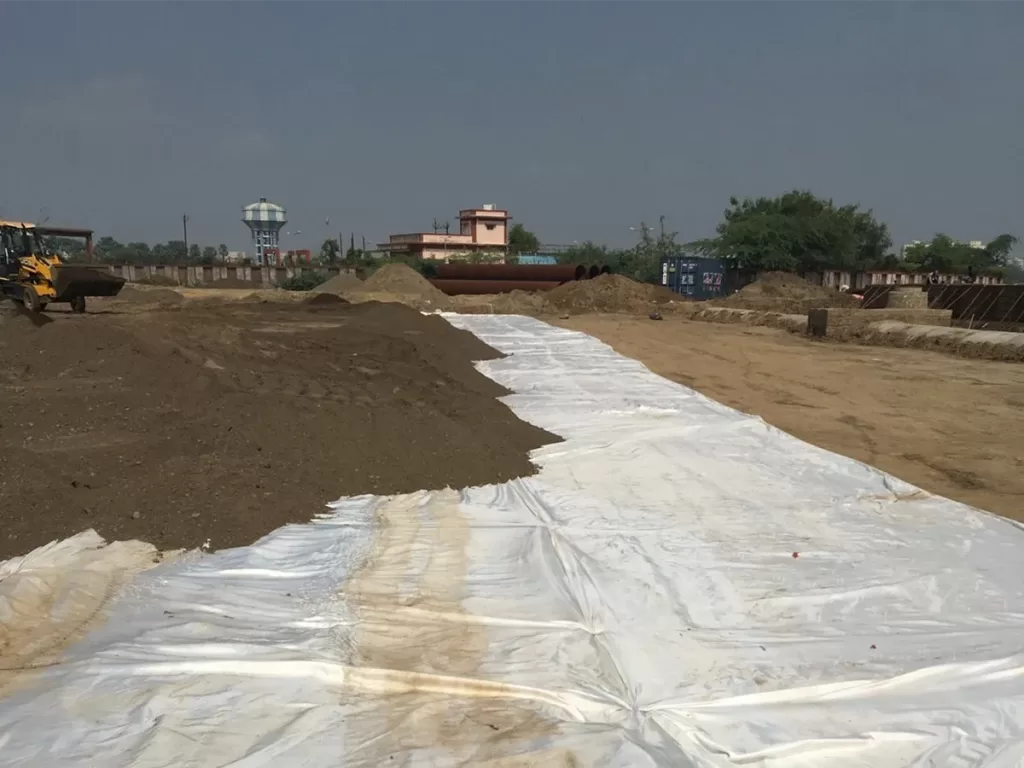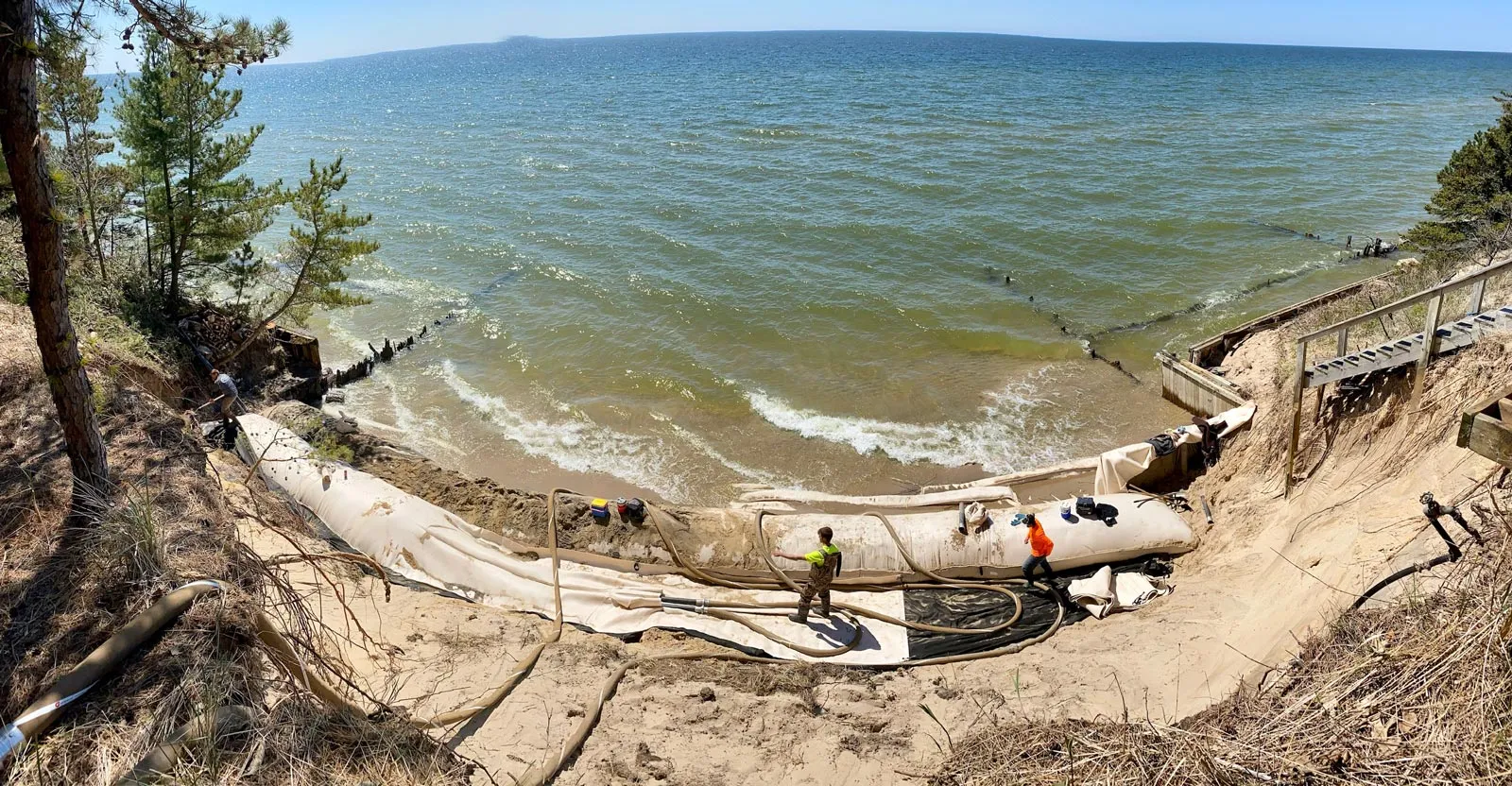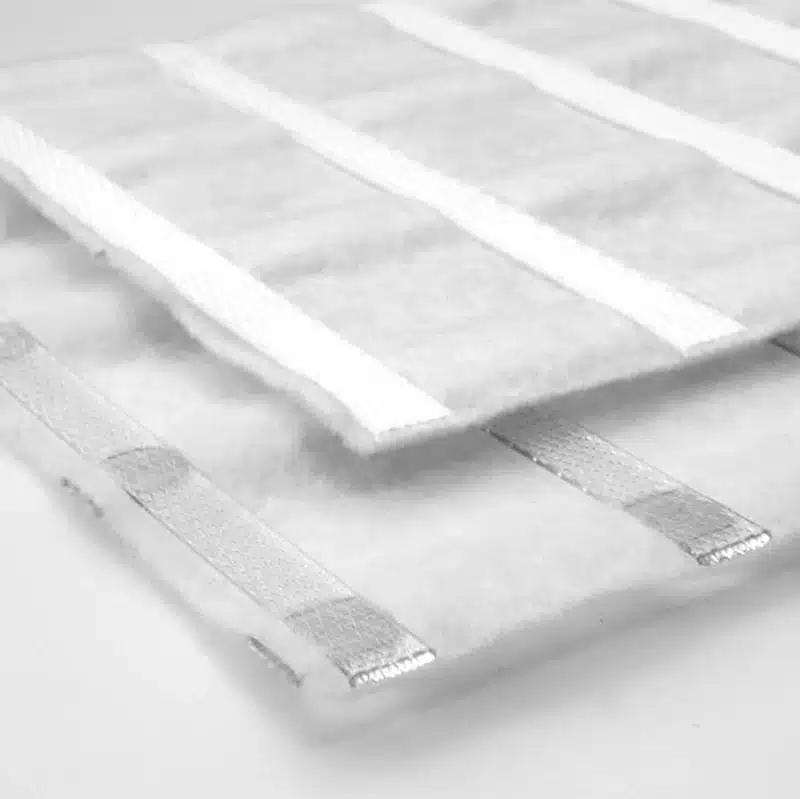+86-159 9860 6917
info@geofantex.com
geofantex@gmail.com
+86-400-8266163-44899
Geotextile in seawalls has emerged as a groundbreaking solution for enhancing coastal protection and promoting sustainability. Seawalls play a crucial role in mitigating coastal erosion and safeguarding coastal communities and infrastructure. However, traditional seawalls often face limitations, such as wave energy reflection and potential environmental damage. By integrating geotextiles into seawall construction, these drawbacks can be overcome. Geotextiles act as wave energy dissipators, reducing wave reflection and minimizing erosion in adjacent areas. Additionally, geotextiles promote ecological stability by allowing water to pass through while supporting vegetation growth. The use of geotextiles in seawalls not only enhances their effectiveness in shoreline protection but also contributes to long-term sustainability and ecological resilience in coastal regions.

What is the main drawback of seawalls?
The main drawback of seawalls is that they can have negative impacts on the coastal environment. While seawalls protect shorelines from erosion and storm surges, they often lead to the following issues:
- Loss of Natural Habitats: Seawalls can disrupt coastal ecosystems by preventing the natural movement of sand and other materials, which is essential for habitats like beaches, wetlands, and estuaries.
- Increased Erosion Downshore: By blocking the natural flow of sediment, seawalls can cause increased erosion further along the coast, as the protective material (sand, for example) no longer replenishes the area.
- Cost and Maintenance: Seawalls require significant investment to build and maintain, and their effectiveness may diminish over time due to wear and tear from constant exposure to waves and weather.
- Visual Impact: Seawalls can alter the aesthetic value of the coastline, often creating an unnatural and visually harsh barrier between land and sea.
Despite these drawbacks, they are still a common solution in areas where human development or infrastructure needs to be protected.
What are geotextiles generally used for?
Geotextiles are commonly used in a variety of civil engineering and environmental projects due to their versatile properties. Here are some key applications and benefits:
- Separation: They separate different soil layers to prevent mixing, which helps maintain the stability and integrity of the layers, improving the durability of structures like roads and railways.
- Filtration: Geotextiles allow water to pass through while blocking soil particles, making them ideal for drainage systems and preventing soil erosion.
- Reinforcement: They enhance soil strength and stabilize embankments, retaining walls, and slopes by distributing loads over a larger area.
- Protection: Geotextiles protect geomembranes or other materials from damage during installation or due to environmental factors, extending the lifespan of these structures.
- Drainage: They assist in water management, channeling excess water away from construction sites, agriculture, and other sensitive areas.
What role do geotextiles play in enhancing the effectiveness of seawalls?
Geotextiles play a crucial role in enhancing the effectiveness of seawalls by improving stability, filtration, and erosion control. Their main functions include:
- Erosion Control – Geotextiles prevent soil from being washed away by waves and tidal action, helping to maintain the structural integrity of the seawall.
- Filtration – They allow water to pass through while preventing the loss of fine soil particles, reducing the risk of undermining the seawall.
- Drainage Improvement – By facilitating proper water flow behind the seawall, geotextiles help reduce hydrostatic pressure, which can weaken the structure over time.
- Separation Layer – Geotextiles act as a barrier between different soil layers and construction materials, preventing mixing and maintaining the seawall’s strength.
- Reinforcement – In some cases, geotextiles add structural support by distributing loads more evenly and improving the seawall’s ability to withstand wave forces.
By incorporating geotextiles, seawalls become more durable, resistant to erosion, and capable of withstanding harsh marine conditions for longer periods.
What types of geotextiles are commonly used in seawall applications?
Woven Geotextiles
- Characteristics: Made by weaving polypropylene or polyester fibers together.
- Benefits:
- Strength: High tensile strength suitable for heavy loads.
- Stability: Provides excellent support and reinforcement.
- Erosion Control: Effective in preventing soil erosion.
Non-Woven Geotextiles
- Characteristics: Manufactured by bonding fibers together using chemical, thermal, or mechanical means.
- Benefits:
- Filtration: Allows water to pass through while retaining soil particles.
- Drainage: Enhances drainage properties to reduce hydrostatic pressure.
- Versatility: Can be used for separation, filtration, and protection.
Knitted Geotextiles
- Characteristics: Created by interlocking loops of yarn.
- Benefits:
- Flexibility: Adapts to different shapes and surfaces.
- Durability: Provides long-term performance in harsh marine conditions.
- Ease of Installation: Simplifies the installation process due to its flexibility.
Reasons for Choosing Geotextiles in Seawall Applications
- Stability Enhancement: Geotextiles provide structural stability to seawalls by reinforcing the soil and distributing loads.
- Erosion Control: They prevent soil erosion by retaining soil particles while allowing water to pass through.
- Separation: Geotextiles maintain the separation between different soil layers, preventing intermixing and ensuring the integrity of the seawall structure.
- Drainage Improvement: They enhance the drainage capabilities of seawalls, reducing hydrostatic pressure and preventing waterlogging.
- Cost-Effectiveness: Using geotextiles can reduce maintenance costs and extend the lifespan of seawalls.

In conclusion, the integration of geotextiles into seawall construction represents a significant advancement in coastal protection. By dissipating wave energy, reducing wave reflection, and promoting ecological stability, geotextiles enhance the effectiveness and longevity of seawalls. The selection of appropriate geotextile types depends on the specific project requirements and soil conditions, allowing for customized solutions tailored to each coastal defense application.



Get Free Sample
We’ll respond as soon as possible(within 12 hours)





















